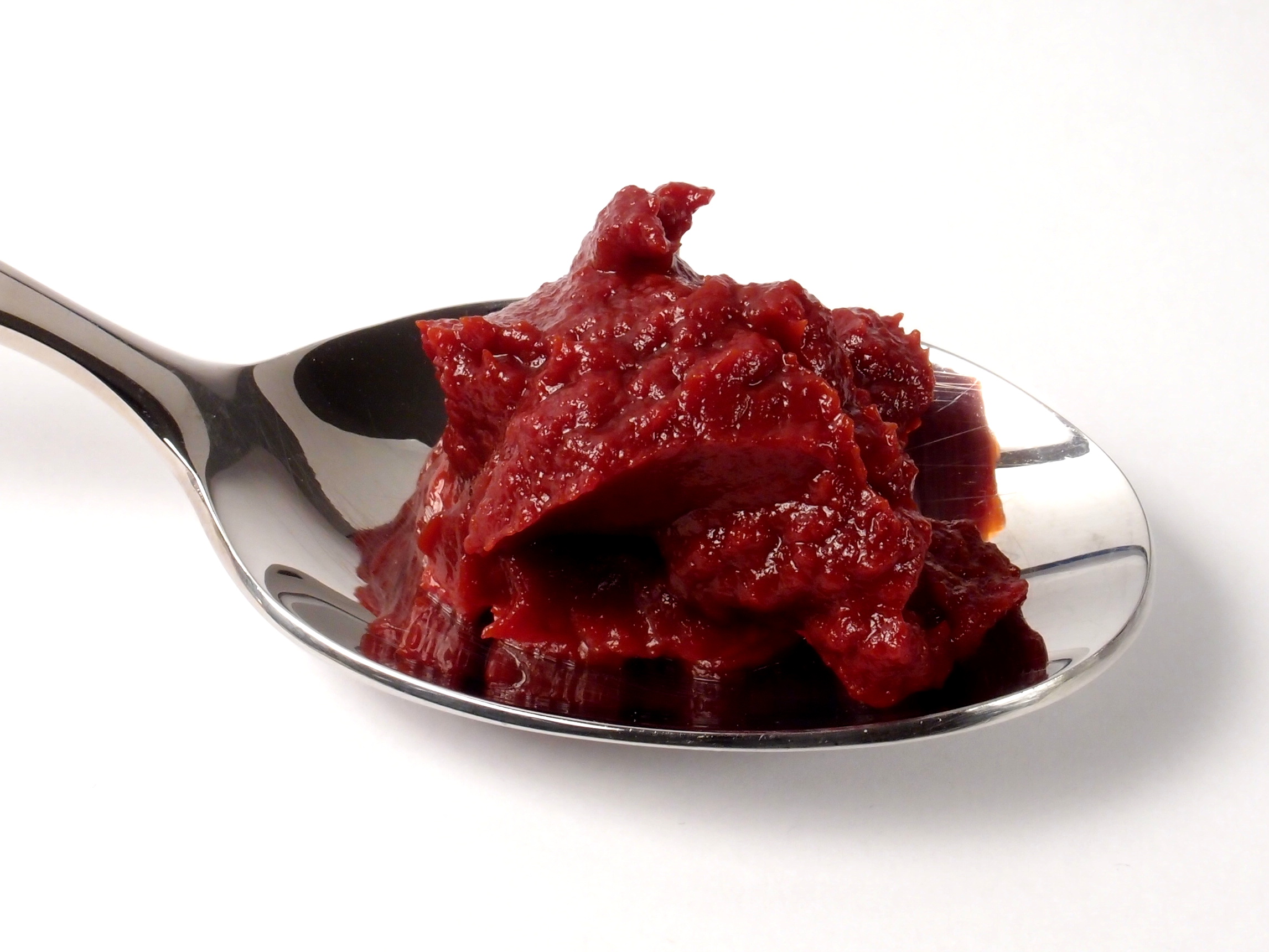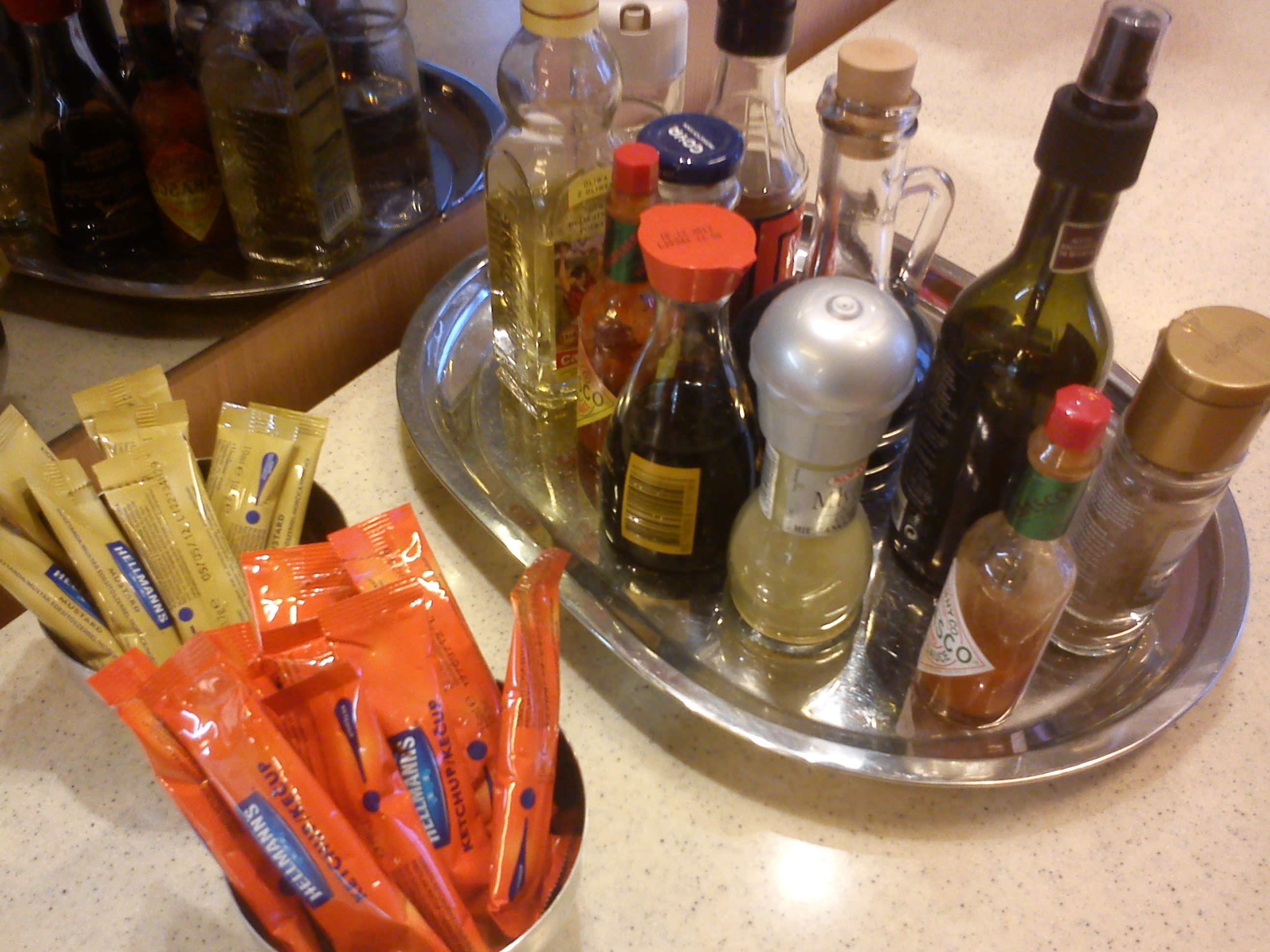|
Vecchi Ketchup Factory
The Vecchi Ketchup Factory in Hazlet, New Jersey produced ketchup from the early 20th century until around 1960. The factory operated in the early 20th century. Farmers from the area brought their tomatoes to be unloaded from horse-drawn carriages at the factory to make tomato paste, ketchup and canned tomatoes. Apple butter and cider, were made in the fall, although the factory was primarily known as a ketchup factory. The factory later became a foundry where brass castings were produced before closing around 1960. A fire destroyed much of the abandoned factory in 1963 except for the chimney, which remained until it was demolished for the Hazlet station Hazlet is a station on New Jersey Transit's North Jersey Coast Line in Hazlet, Monmouth County, New Jersey. The station is located between a stretch of tracks from Keyport–Holmdel Road ( Monmouth County Route 4) to Hazlet Avenue. His ... parking project. After the chimney's demolition in 2002, bricks from the chi ... [...More Info...] [...Related Items...] OR: [Wikipedia] [Google] [Baidu] |
Vecchi
Vecchi is an Italian surname. Notable people with this surname include: * Orazio Vecchi (1550-1605), Italian composer and choirmaster * Alessandro Vecchi (born 1991), Italian footballer * Augusto Vittorio Vecchi (1842-1932), Italian naval officer and author * Irene Vecchi (born 1989), Italian sabre fencer * Eligio Vecchi (1910-1968), Italian professional football player * Giovanni Vecchi, Italian general in the Royal Italian Army * Juan Edmundo Vecchi (1931-2002), Italian Roman Catholic Priest * Luca Vecchi (born 1972), Italian politician * Mario Vecchi (born 1957), Italian judoka * Natale Vecchi (born 1917), Italian wrestler * Paolo Vecchi (born 1959), Italian former volleyball player * Stefano Vecchi (born 1971), Italian professional footballer turned coach * Villiam Vecchi (born 1948), Italian former football goalkeeper Other * Vecchi Editore * Vecchi Ketchup Factory See also * De Vecchi * De Vecchis * Vecchio (other) * Vecchio * Veche (other) ... [...More Info...] [...Related Items...] OR: [Wikipedia] [Google] [Baidu] |
Hazlet Township, New Jersey
Hazlet is a township in Monmouth County, New Jersey, United States. The township is located near the Raritan Bay within the Raritan Valley region. It is located in the New York Metropolitan Area and is a bedroom community of New York. As of the 2010 United States Census, Hazlet's population was 20,334, reflecting a decline of 1,044 (−4.9%) from the 21,378 counted in the 2000 Census, which had in turn declined by 598 (−2.7%) from the 21,976 counted in the 1990 Census. Hazlet is part of the Bayshore Regional Strategic Plan, an effort by nine municipalities in northern Monmouth County to reinvigorate the area's economy by emphasizing the traditional downtowns, dense residential neighborhoods, maritime history, and the natural environment of the Raritan Bayshore coastline. History What is now Hazlet Township was originally incorporated as Raritan Township by an act of the New Jersey Legislature on February 25, 1848, from portions of Middletown Township. Portions of the ... [...More Info...] [...Related Items...] OR: [Wikipedia] [Google] [Baidu] |
Ketchup
Ketchup or catsup is a table condiment with a sweet and tangy flavor. The unmodified term ("ketchup") now typically refers to tomato ketchup, although early recipes used egg whites, mushrooms, oysters, grapes, mussels, or walnuts, among other ingredients. Tomato ketchup is made from tomatoes, sugar, and vinegar, with seasonings and spices. The spices and flavors vary, but commonly include onions, allspice, coriander, cloves, cumin, garlic, and mustard, and sometimes include celery, cinnamon, or ginger. The market leader in the United States (60% market share) and the United Kingdom (82%) is Heinz Tomato Ketchup. Tomato ketchup is most often used as a condiment to dishes that are usually served hot and are fried or greasy: french fries and other potato dishes, hamburgers, hot dogs, chicken tenders, hot sandwiches, meat pies, cooked eggs, and grilled or fried meat. Ketchup is sometimes used as the basis for, or as one ingredient in, other sauces and dressings, an ... [...More Info...] [...Related Items...] OR: [Wikipedia] [Google] [Baidu] |
Tomato Paste
Tomato paste is a thick paste made by cooking tomatoes for several hours to reduce the water content, straining out the seeds and skins, and cooking the liquid again to reduce the base to a thick, rich concentrate. It is used to impart an intense tomato flavour to a variety of dishes, such as pasta, soups and braised meat. It is used heavily in Italian cultured food. By contrast, tomato purée is a liquid with a thinner consistency than tomato paste, while tomato sauce is even thinner in consistency. History and traditions Tomato paste is traditionally made in parts of Sicily, southern Italy and Malta by spreading out a much- reduced tomato sauce on wooden boards that are set outdoors under the hot August sun to dry the paste until it is thick enough, when it is scraped up and held together in a richly colored, dark ball. Today, this artisan product is harder to find than the industrial version (which is much thinner). Commercial production uses tomatoes with thick pericarp wa ... [...More Info...] [...Related Items...] OR: [Wikipedia] [Google] [Baidu] |
Apple Butter
Apple butter is a highly concentrated form of apple sauce produced by long, slow cooking of apples with cider or water to a point where the sugar in the apples caramelizes, turning the apple butter a deep brown. The concentration of sugar gives apple butter a much longer shelf life as a preserve than apple sauce. Background The roots of apple butter lie in Limburg (Belgium and the Netherlands) and Rhineland (Germany), conceived during the Middle Ages, when the first monasteries (with large orchards) appeared. The production of the butter was a perfect way to conserve part of the fruit production of the monasteries in that region, at a time when almost every village had its own apple-butter producers. The production of apple butter was also a popular way of using apples in colonial America, well into the 19th century. The product contains no actual dairy butter; the term ''butter'' refers only to the butter-like thick, soft consistency, and apple butter's use as a spread for bre ... [...More Info...] [...Related Items...] OR: [Wikipedia] [Google] [Baidu] |
Cider
Cider ( ) is an alcoholic beverage made from the fermented juice of apples. Cider is widely available in the United Kingdom (particularly in the West Country) and the Republic of Ireland. The UK has the world's highest per capita consumption, as well as the largest cider-producing companies. Ciders from the South West of England are generally higher in alcoholic content. Cider is also popular in many Commonwealth countries, such as India, Canada, Australia, and New Zealand. As well as the UK and its former colonies, cider is popular in Portugal (mainly in Minho and Madeira), France (particularly Normandy and Brittany), Friuli, and northern Spain (specifically Asturias). Central Europe also has its own types of cider with Rhineland-Palatinate and Hesse producing a particularly tart version known as Apfelwein. In the U.S., varieties of fermented cider are often called ''hard cider'' to distinguish alcoholic cider from non-alcoholic apple cider or "sweet cider", also m ... [...More Info...] [...Related Items...] OR: [Wikipedia] [Google] [Baidu] |
Hazlet Station
Hazlet is a station on New Jersey Transit's North Jersey Coast Line in Hazlet, Monmouth County, New Jersey. The station is located between a stretch of tracks from Keyport–Holmdel Road ( Monmouth County Route 4) to Hazlet Avenue. History Opened as Holmdel, Hazlet station opened in 1875 as part of the New York and Long Branch Railroad, a subsidiary of both the Pennsylvania Railroad and the Central Railroad of New Jersey. The station name changed to Hazlet in 1879 when it was determined to be confusing for the Holmdel in Monmouth County. The station was renamed after John Hazlett, a local settler and property owner. The agency at Hazlet closed in 1952. The station was rebuilt in 2003, completed on May 27 at a cost of $6.1 million. The refurbishment included two new side high-platforms and new canopies to conform with ADA regulations. The abandoned, historic Vecchi Ketchup Factory chimney at the site of the new station project was dismantled to make way for addit ... [...More Info...] [...Related Items...] OR: [Wikipedia] [Google] [Baidu] |
Condiment Companies Of The United States
A condiment is a preparation that is added to food, typically after cooking, to impart a specific flavor, to enhance the flavor, or to complement the dish. A table condiment or table sauce is more specifically a condiment that is served separately from the food and is added to taste by the diner. Condiments are sometimes added prior to serving, for example, in a sandwich made with ketchup, mustard or mayonnaise. Some condiments are used during cooking to add flavor or texture: barbecue sauce, compound butter, teriyaki sauce, soy sauce, Marmite and sour cream are examples. Many condiments, such as mustard or ketchup, are available in single-serving packets, commonly when supplied with take-out or fast food meals. Definition The exact definition of a condiment varies. Some definitions encompass spices and herbs, including salt and pepper, using the term interchangeably with ''seasoning''. Others restrict the definition to include only "prepared food compound containing ... [...More Info...] [...Related Items...] OR: [Wikipedia] [Google] [Baidu] |
Demolished Buildings And Structures In New Jersey
Demolition (also known as razing, cartage, and wrecking) is the science and engineering in safely and efficiently tearing down of buildings and other artificial structures. Demolition contrasts with deconstruction, which involves taking a building apart while carefully preserving valuable elements for reuse purposes. For small buildings, such as houses, that are only two or three stories high, demolition is a rather simple process. The building is pulled down either manually or mechanically using large hydraulic equipment: elevated work platforms, cranes, excavators or bulldozers. Larger buildings may require the use of a wrecking ball, a heavy weight on a cable that is swung by a crane into the side of the buildings. Wrecking balls are especially effective against masonry, but are less easily controlled and often less efficient than other methods. Newer methods may use rotational hydraulic shears and silenced rock-breakers attached to excavators to cut or break through wo ... [...More Info...] [...Related Items...] OR: [Wikipedia] [Google] [Baidu] |

_-_(cropped).jpg)




